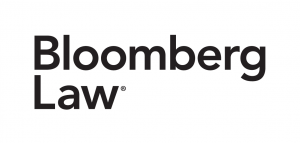An Important New Tool For Litigators In Federal Court
If you handle civil litigation in federal court, you need to know about this great new resource.
 We do not (yet) live in an age of robot judges who issue rulings with perfect, mechanistic consistency. Judges are unique human beings, with their own distinctive ways of analyzing legal problems, and how a case gets resolved often turns in large part upon the jurist who is presiding.
We do not (yet) live in an age of robot judges who issue rulings with perfect, mechanistic consistency. Judges are unique human beings, with their own distinctive ways of analyzing legal problems, and how a case gets resolved often turns in large part upon the jurist who is presiding.
Smart litigators get to know the judges before whom they regularly appear. Knowing how a given argument will be received by a given judge is a hallmark of a good litigator — and clients often hire lawyers precisely because they possess such insight.
Until now, knowledge about judges has generally come from the anecdotal experiences of individual litigators who have appeared before the judge in question. But today — the age of Big Data, with a vast amount of publicly available information about judges and their rulings — there must be a better, or at least a more systematic, approach.
Indeed there is. Say hello to Litigation Analytics, available to all users of Bloomberg Law as of today. I recently sat down with Darby Green, Commercial Product Director for Bloomberg Law Litigation Solutions, who oversaw the development of this product, for a sneak preview of this powerful tool.
As Green explained to me, “Bloomberg Law is uniquely situated in this space, given its access to massive amounts of legal data, including both case law and dockets. Litigation Analytics makes this data meaningful by surfacing information that can better predict outcomes and augment litigation strategies.”
Given my well-documented fascination with the federal judiciary, I found the data about judges to be the most interesting aspect of Litigation Analytics. This slide shows the page for one of New York’s most celebrated (and criticized) judges, the liberal lion of the Eastern District of New York, Judge Jack B. Weinstein (click to enlarge):
At the top of the page, users can easily access Judge Weinstein’s career history, his most-cited opinions, and recent news coverage about him and his rulings. Right below that are four tabs: Motion Outcomes, Appeal Outcomes, Length of Case, and Appearances & Case Types.
Under Motion Outcomes, a user can see how often a judge grants or denies two key types of motions: motions to dismiss and motions for summary judgment. This information is very useful to litigators appearing before a specific judge and deciding how to proceed in their case. If a judge grants motions to dismiss at a high rate, for example, then a lawyer representing the defendant might want to file such a motion; conversely, if a judge rarely grants motions to dismiss, then it might be a waste of time. Using Litigation Analytics, litigators can make better, more well-informed decisions about case strategy.
Under Appeal Outcomes, the slide shown here, a user can learn how often Judge Weinstein gets affirmed or reversed. Users can drill down into the data further by using the Legal Topic option, to see how often a judge gets affirmed or reversed in a particular area of law. This information is helpful in deciding the chances of succeeding on appeal, which can inform the decision about whether to appeal in the first place. The underlying filings are helpfully linked at the bottom of the page so users can explore individual cases in greater detail if so inclined, with direct access to the filings from PACER (Public Access to Court Electronic Records).
Under Length of Case, a user can find out how long a judge takes on average to resolve a case, from the filing of the complaint to the date of termination (e.g., dismissal or settlement), including cases of different types (using the Case Type option). This can help lawyers figure out how long a litigation might last and how much it might cost — which can help outside counsel decide what to charge (for alternative fee arrangements), and in-house counsel decide what to budget or reserve.
Finally, under Appearances & Case Types, a user can see the kinds of cases a judge most frequently handles, by area of law, and the law firms and companies that appear before her most frequently. One can imagine many use cases for this information — for example, to see which law firms have strong or weak track records before which judges, in which types of cases.
“With the judge search on Litigation Analytics, we sought to build an interface that can support all litigators,” said Green. “To that end, we are excited to offer a solution that includes all active district court judges and all case types, across the country.”
The data about judges struck me as the most noteworthy feature of Litigation Analytics, but it’s not the only offering. One can also access data by company and by law firm. So the tool can be used to see, for example, which law firms get the most litigation work from which companies.
Here, for example, you can see which law firms get the most work from Apple. The slide shows the firms most frequently hired by Apple, as well as the types of cases they are hired for, and the underlying court filings are linked at the bottom of the page for easy access (click to enlarge):
One obvious use case for this type of information: competitive intelligence for purposes of business development. Partners and staffers in charge of business development for a law firm can see which of their competitors represent which current or potential clients, what types of results those firms are getting for their clients, and where there might be opportunities to pitch business or gain market share. The Bloomberg databases contain information about more than 70,000 public companies, 3.5 million private companies, and 7,000 law firms — all the Biglaw behemoths, as well as the smaller firms and boutiques that play in the same league.
What features might be added to Litigation Analytics in the months and years ahead? Right now it focuses just on civil litigation in federal trial courts — a logical starting point thanks to PACER, which offers good, “clean” data — but one could easily see it expanding to include federal appellate courts, state trial courts, or even international tribunals. How Litigation Analytics develops will depend, of course, upon the feedback that Bloomberg Law receives from users.
Another possible future direction would be to compile analytics for individual litigators, a technology Bloomberg Law is already working on. Attorneys are a famously competitive bunch, and analytics for litigators will allow them — and their current and potential clients — to see how they stack up against each other. For example, a general counsel deciding which outside lawyer to hire for a particular type of case before a particular judge would be able to use Litigation Analytics to figure out the litigator with the best track record in that type of case before that specific judge (e.g., the litigator who has won the most products liability cases before Judge Weinstein).
 Litigation Analytics is just one example of how technology and data can be harnessed to help lawyers do their jobs better. An additional tool that Bloomberg Law is developing is another machine-learning platform that will identify legal standards and terms found within court opinions and connect them to related concepts in other opinions. A litigator could enter a phrase like “promissory estoppel,” and the tool would then generate related concepts — e.g., elements of promissory estoppel, detrimental reliance, consideration — and specific cases that express and discuss the concepts in the way the litigator is looking for. This will be a godsend for any associate who gets a needle-in-a-haystack assignment from a partner that starts with, “There must be a case that says….”
Litigation Analytics is just one example of how technology and data can be harnessed to help lawyers do their jobs better. An additional tool that Bloomberg Law is developing is another machine-learning platform that will identify legal standards and terms found within court opinions and connect them to related concepts in other opinions. A litigator could enter a phrase like “promissory estoppel,” and the tool would then generate related concepts — e.g., elements of promissory estoppel, detrimental reliance, consideration — and specific cases that express and discuss the concepts in the way the litigator is looking for. This will be a godsend for any associate who gets a needle-in-a-haystack assignment from a partner that starts with, “There must be a case that says….”
“Litigation Analytics is a perfect example of Bloomberg Law’s mission to provide innovative technology that helps our users develop successful business strategies,” said Green. “Litigation Analytics will be an invaluable resource to law firm litigators and corporate counsel alike.” I couldn’t agree more — and that’s high praise indeed, given the increasingly impressive offerings available to help lawyers do their jobs better.
If you already have access to Bloomberg Law, you can access Litigation Analytics here. If you don’t have Bloomberg Law but would like to learn more about it and Litigation Analytics, click here. And to sign up for a webinar led by Darby Green to learn more about this new functionality and how to use it, click here.
New Bloomberg Law Litigation Analytics Solution Provides Insights into Judicial Behavior [Bloomberg Law]
Find Meaning in a Universe of Legal Data [Bloomberg Law]
Earlier: Take Your Judges As They Are
David Lat is the founder and managing editor of Above the Law and the author of Supreme Ambitions: A Novel. You can connect with David on Twitter (@DavidLat), LinkedIn, and Facebook, and you can reach him by email at [email protected].









